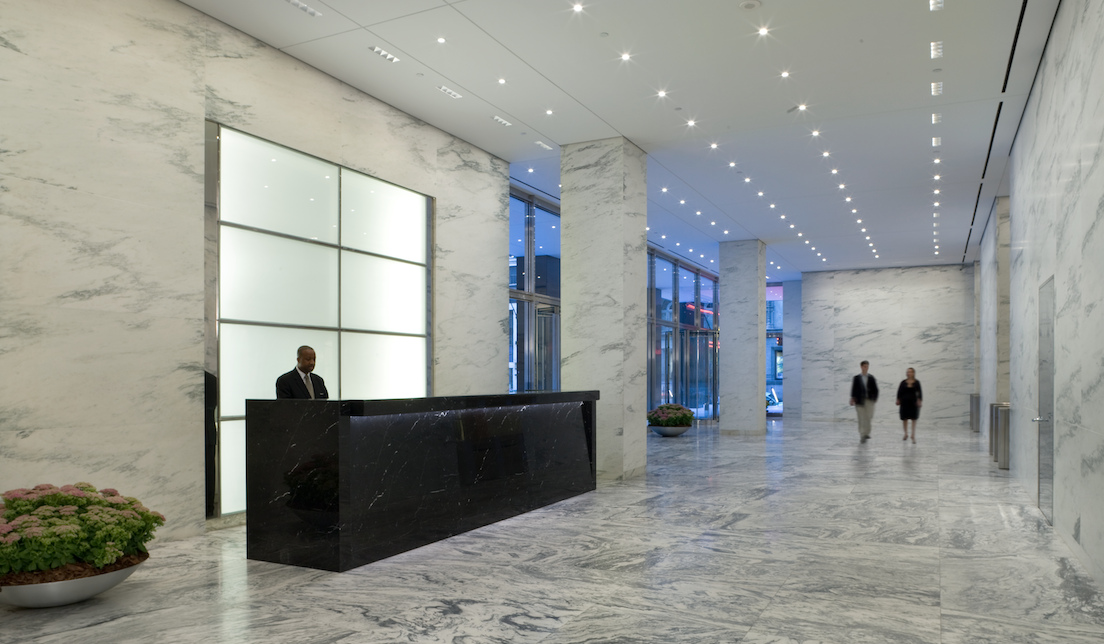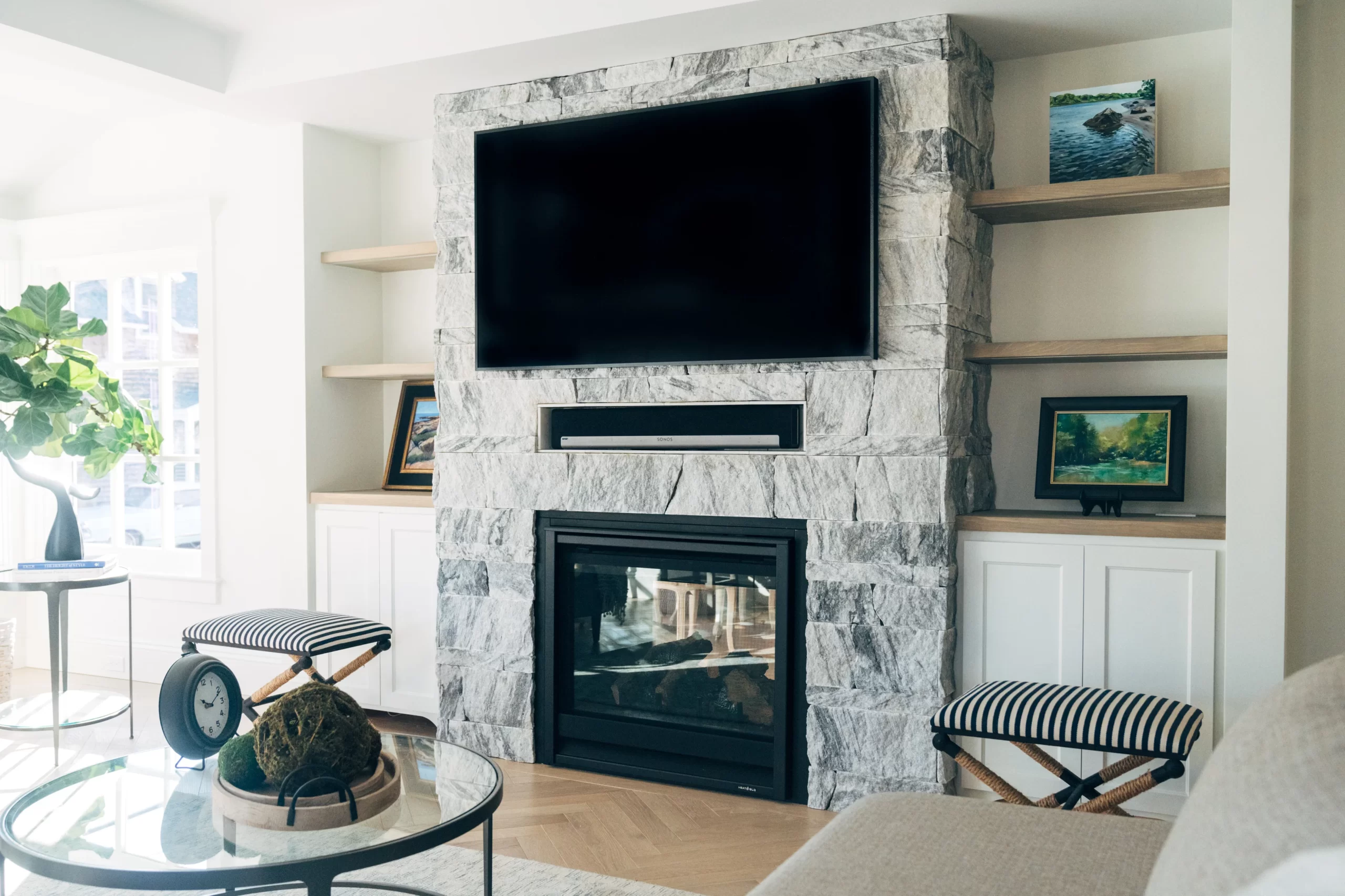Why Do Leading Firms Use American Marble? An Interview with MdeAS’ Architect Partner Dan Shannon
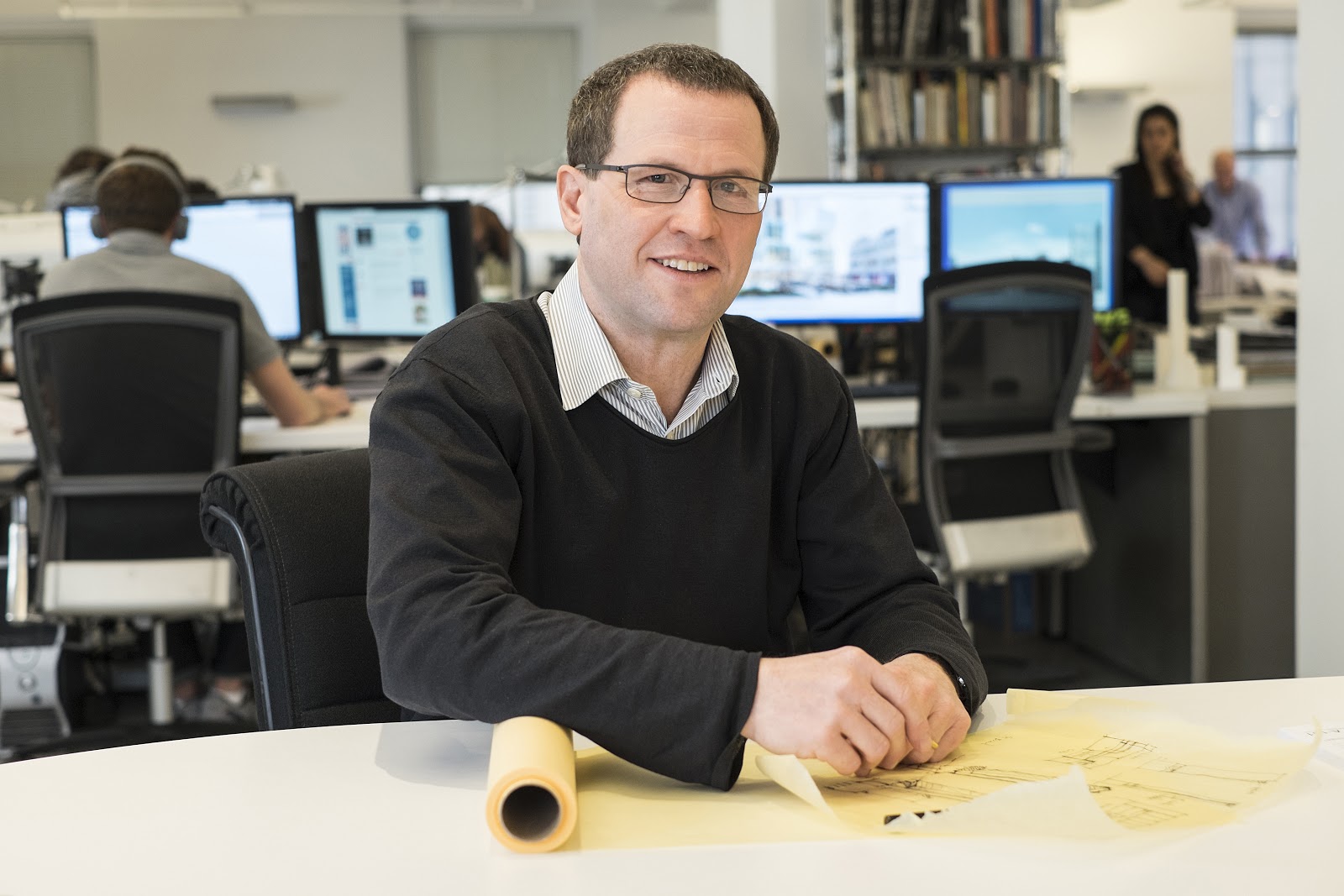
Courtesy of MdeAS Architects
MdeAS is a prominent New York City based architecture firm that has created modern and progressive design solutions responsible for some of the most prestigious buildings in the Big Apple. A growing list of MdeAS NYC projects include the General Motors Building, 888 Seventh Avenue, 575 Fifth Avenue, 1221 Avenue of the Americas, and 1633 Broadway. The team is at the forefront of design firms who use American marble, which you can see in these commercial buildings that use classic, natural materials alongside modern steel and glass. These buildings reflect MdeAS’ commitment to design and connect indoor and outdoor spaces. The visitor experience begins with a streetscape that transitions to the interior, a continuation of the modern design.
We spoke with partner Dan Shannon about the firm’s design, the visitor experience, and what he loves about stone.
Many of your designs start with the entry, with planters and terraces, which continue into the lobby. Can you discuss the importance of creating a visitor experience?
As important as the overall building is, what really counts is the street level. It may be the tallest building on earth but what really matters is what you can see and touch. A building has to give a sense of arrival. That’s the true memorable experience. When you are getting closer to the entry, you are no longer in the public realm. Memory is very important when you leave the building, also, it’s important that you have a positive experience and remember something unique about it.
We’d love you to talk about the choice of stone for specific projects. What qualities did you seek for each selection? What did you want to achieve with the look or design?
888 Seventh Ave
MdeAS designed the lobby and plaza of 888 Seventh Avenue, the Vornado Realty Trust, 2008.
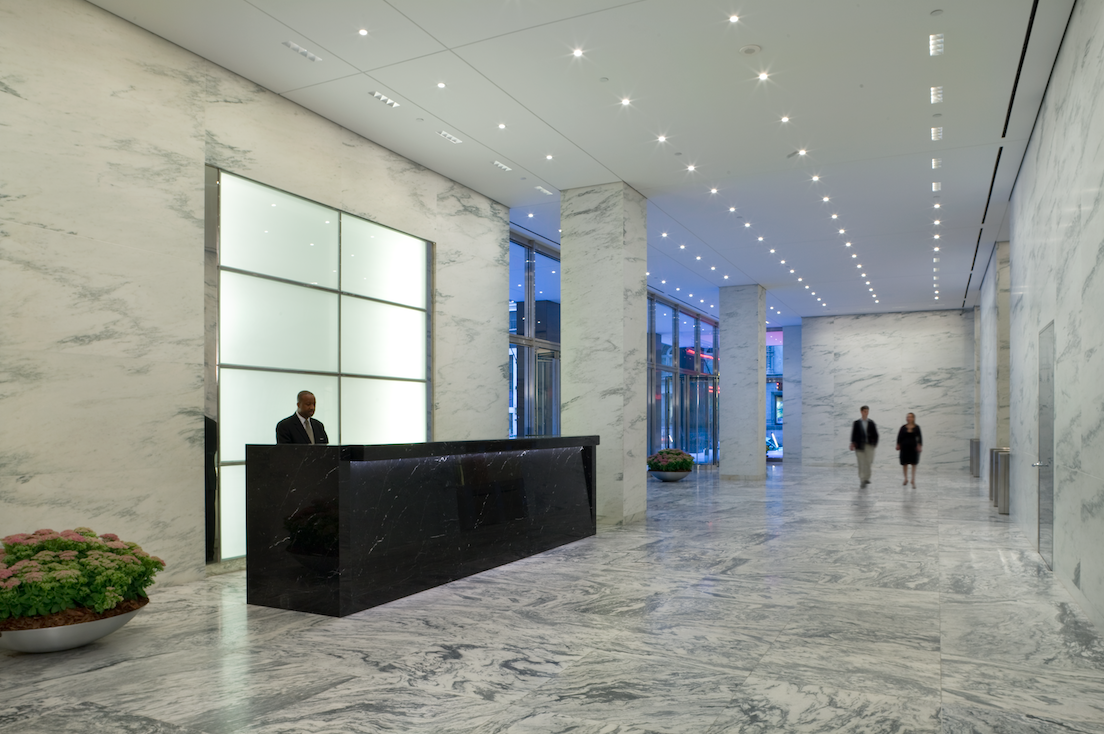
Courtesy of MdeAS Architects
We were looking for a light-colored stone that could go from the outside to the inside. It also had to be durable enough to withstand the harsh winters. There are very few choices that fit that bill. My client wanted a continuous carpet from out to in, but wanted the inside to be Class A. So we used GEORGIA MARBLE – PEARL GREY™and GEORGIA MARBLE – SOLAR GREY™sandblasted. I always admired the garden at The Museum of Modern Art for the beauty of the garden, and the way it highlights marble that you use outside, and the continuity between the interior and exterior spaces.
575 Fifth Ave
MdeAS was responsible for the 2010 design of the facade and public atrium of 575 Fifth Avenue for which they used GEORGIA MARBLE – WHITE CHEROKEE™.
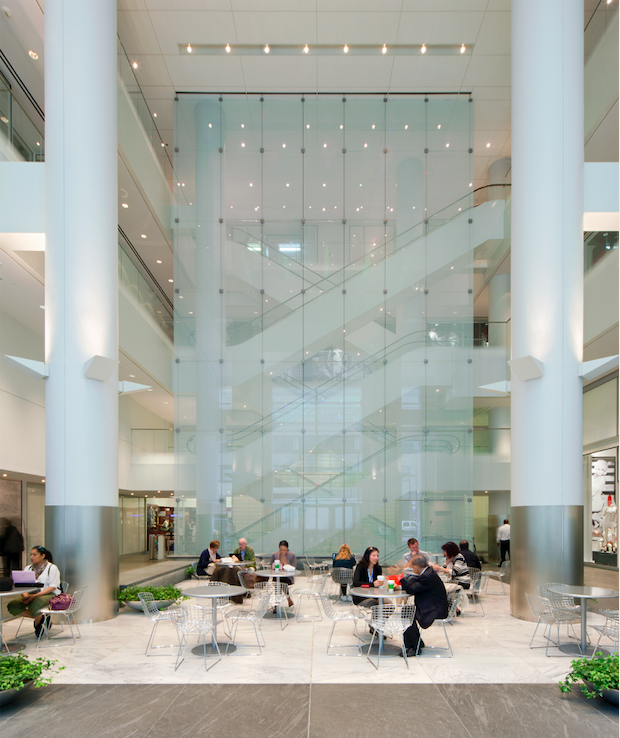
Courtesy of MdeAS Architects
This is one of the few important public atriums in New York City. There aren’t many public spaces where anyone can go to relax and feel that they belong. Surrounded by retail, we created a space in the center of the atrium with the White Cherokee™ marble – we called it the “Dance Floor”. I wanted it to contrast the darker stone surrounding the space. And for it to be durable, of course.
1221 Avenue of the Americas
MdeAS designed the building’s North and South Plazas using Georgia Marble – Pearl Grey™ in a thick vein cut, with a honed finish.
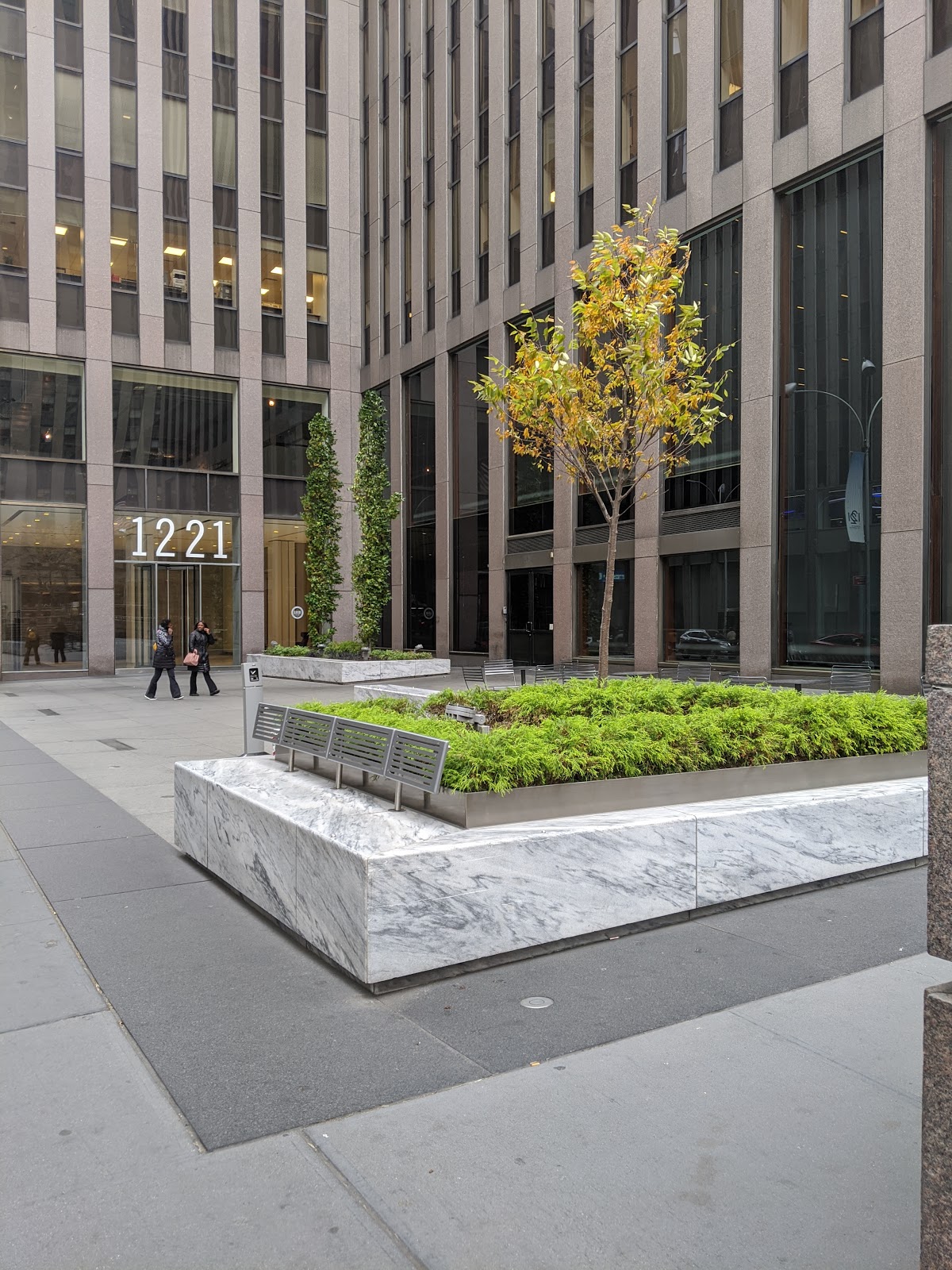
Courtesy of MdeAS Architects
We wanted to contrast the granite paving and we wanted the rich veins of the stone. The planters in the seating areas were lifted off the ground with black granite to give a sense of differentiation.
1633 Broadway
MdeAS designed the Paramount Plaza’s paving, benches, and planters.

Courtesy of MdeAS Architects
We used two different Canadian granites: LAURENTIAN GREEN™ granite in a polished finish for the planters and benches (2 1/4″ thickness), while propane flamed finish Laurentian Green granite was used for the plaza’s paving and plinth tops, and CAMBRIAN BLACK® granite, propane flamed finish, for the plaza paving (2″ thickness) and stair treads (6″ thickness). The stones had the qualities of color and tone and texture that we desired for a public plaza and for sculpting the minimalist aesthetic of the seating. We really pushed the flexibility of stone, what you could do in stone, with this project. And we were very happy with the result.
MdeAS does everything from new builds to redevelopments. Is every project fit to use stone?
Most are. In NYC I would be hard pressed to find a project that isn’t. There are so many applications of stone from exterior to interior to details. The beauty of a good stone design is determined not just by its finely balanced proportions or architectural composition; it relies also on sound detailing and robust specifications which help to protect the structure from decay and maintain the appearance of the building throughout its expected life.
MdeAS seems to choose to use stone, particularly American stone, often—why is that?
We like the variety of natural stone available in America, straight out of the earth. The natural environment in America and Canada has provided a plethora of colors, textures, and patterns. We think architecture should connect you to a place and stone helps us to do that.
We like to use stone to paint pictures. And what greater brush is there than nature? You’ve got all these veins that make a pattern. In the lobby, you have an opportunity to sit down for a minute, as you wait for your colleagues to come. The GM building was initially built in the 60s and we did the complete redevelopment, but what good is it to rebuild the base if the tower needs restoration? What was wonderful is that you can take the White Cherokee™ marble, a stone that was used 40 years ago for the building, and go back to the Polycor quarry and find material that matches.
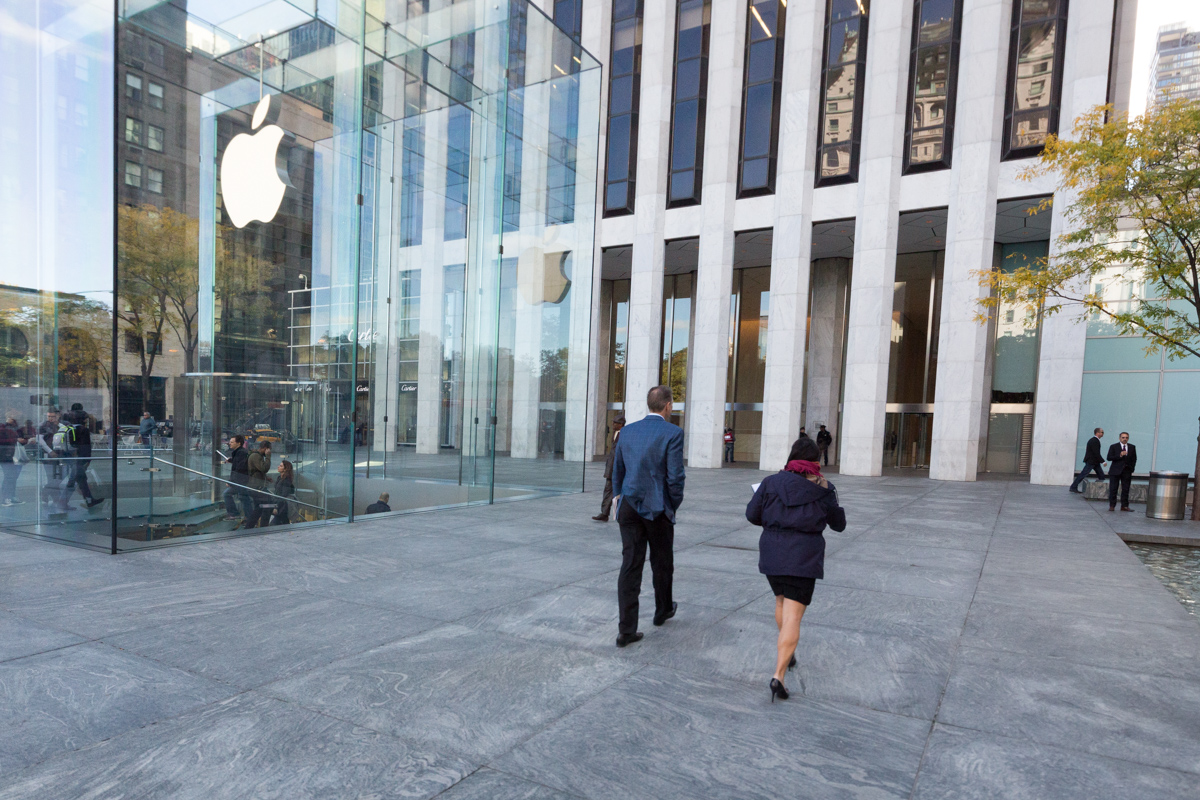
What kind of look and feel does American marble give off?
Stone does something that few other materials—both natural and manmade—do. It represents timelessness, elegance, and strength. The iconic buildings and monuments in Washington D.C. were largely made of natural stone. And if it’s good enough to build a nation’s capital, well…
